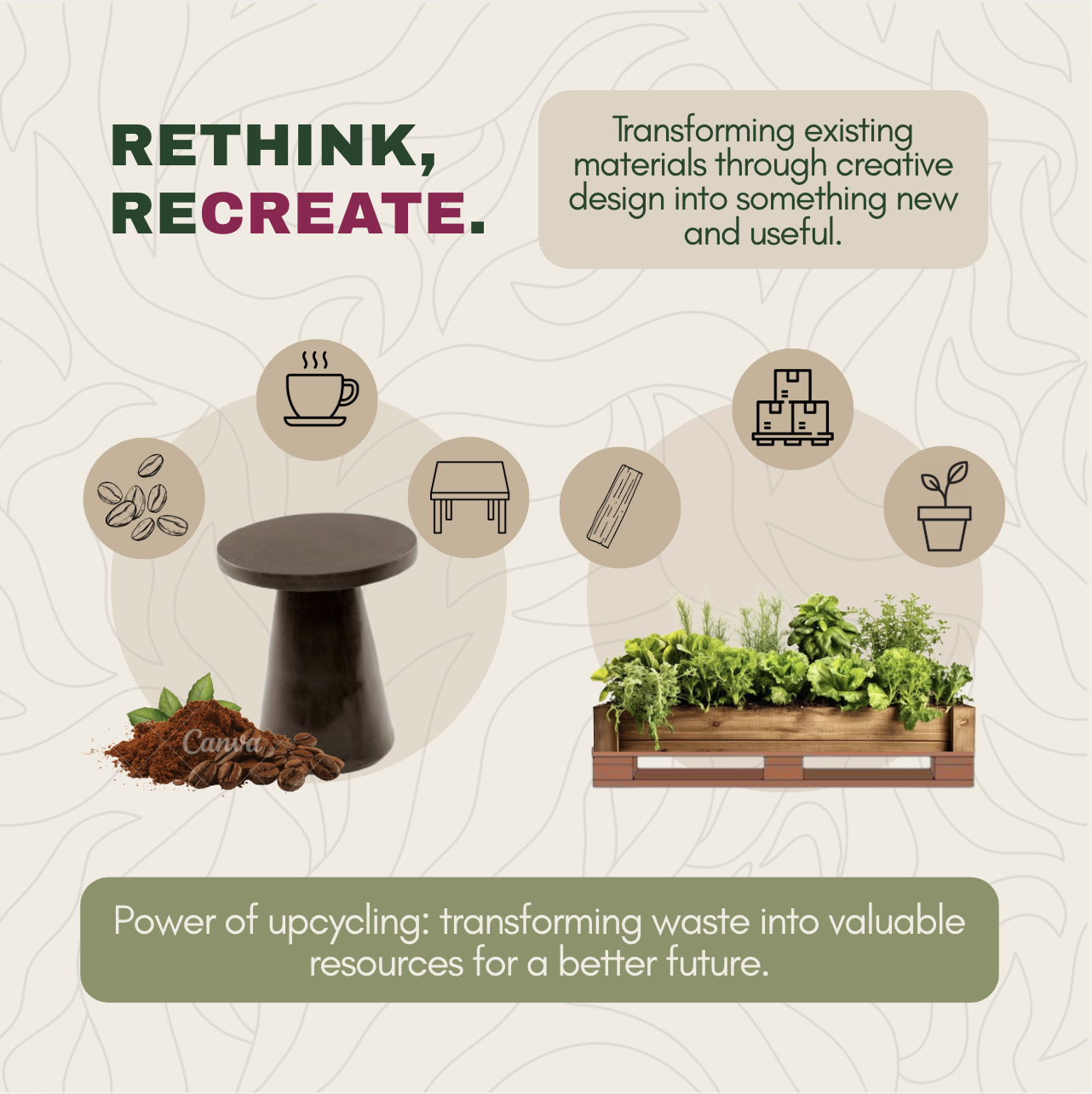Ch 6: Trash to Treasure
The Power of Upcycling
Written and designed by volunteers: Jhayviel, Tanishka, Tiara, and Mikaella
What is Upcycling vs Recycling?
Recycling breaks down waste into raw materials to create new products, often using energy and reducing material quality. Upcycling creatively reuses waste without breaking it down, adding value and extending life. While recycling is industrial and widespread, upcycling is artistic, sustainable, and preserves the original material’s strength. Both are important, but upcycling is often more sustainable, especially for small-scale or household waste, as it avoids industrial energy use and retains material integrity.
Creative Product Examples from Small Businesses
Upcycling brilliantly transforms discarded items, giving them a second, more valuable life. It’s all about innovative resource use and creative solutions, worldwide! See two fascinating examples showing how we can view "waste" with a fresh, resourceful perspective. For instance, consider used coffee grounds. Billions of tons are discarded globally each year, but innovators are now turning this organic waste into sturdy, wood-like furniture such as tables and chairs. This is a smart way to repurpose a common waste product into durable, stylish items. Similarly, old shipping pallets are ideal for upcycling. With a bit of creativity, their strong planks can be transformed into beautiful, functional garden planters or raised beds, significantly diverting wood waste from landfills.
Benefits of Upcycling for the Planet
The benefits of upcycling go beyond creativity and DIY— it’s a smart, sustainable choice. Upcycling creates positive environmental impacts by reducing landfill waste, conserving natural resources, and saving energy. It also offers economic advantages; from saving money to earning income through selling unique, repurposed items. Small choices like these can make a big difference!
How to Start Upcycling in Your Own Life
To start upcycling in our daily life, start collecting things around you that can be repurposed. Look for clothes, curtains, boxes, and bottles to upcycle. Then think of a project that matches your creativity and skill to work with and to upcycle those collects. Upcycling is a journey of learning and fun. For example, I have upcycled empty plastic bottles into flower pots using a cutter, paint, and wool to hang. Similarly, people upcycle plastic bags to create mats and tote bags.
How to turn plastic into mats and bags video link
How to plant trees in plastic bottle video link




